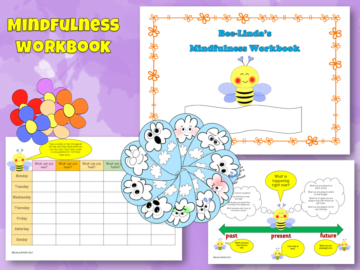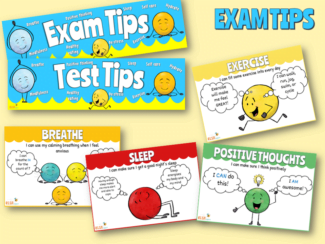#ELSACHAT – Mindfulness and Relaxation
#ELSACHAT
The Facebook group held an event on Mindfulness and Relaxation. There was lots of learning going on and the following is a summary of that event.
Question 1
What do you do yourself to calm down? Do you practice mindfulness?
Lots of personal experiences of ways to calm down. It is important that before teaching children any mindfulness techniques that you do try them yourself. What works for you? How do you achieve that state of mindfulness or full relaxation?
Question 2
What is Mindfulness? How would you describe it?
- Mindfulness is knowing your own abilities but not being afraid to have a go – having a can do attitude.
- Being in the present moment – no past thoughts, no future worries, just being in the present moment right now.
- Concentration on yourself only , paying particular attention to your breathing.
- Being able to think things through and accepting of your feelings and thoughts. Accepting that there are some things you can’t change.
- Right here, right now. trying to be still in the mind.
- Here and now
- In my experience, it’s like this : you know when you feel a bit grubby and stressed and you run yourself a hot scented bath and dip your big toe in? Then you begin to immerse your whole body in the water, without fear of being disturbed? You exhale deeply and wallow. Mindfulness let’s your mind have that warm bath .
While your stress hormones begin to leave you and your mind numbs a bit, your brain starts to repair and your mind finds some order. You still get to decide what thoughts visit you, but you’re not reacting you’re more like dreaming.
It doesn’t have to be more than that, you don’t have to justify it with worthy or constructive reasons. You’re simply giving your mind a restorative rest. It takes some people a bit longer to train themselves. Children and adults can both be very jittery, embarrassed, inhibited, afraid to lose what might seem at first to be conscious control. Providing a secure, safe and trusted environment might be essential. Those with traumas might never get there.
Question 3
What are the benefits of mindfulness?
- The benefits for me is being able to understand myself more and therefore able to help others do the same.
- It can be done pretty much anywhere. It takes away worries and anxiety for a period of time if done properly.
- Great for staying calm and taking away stress.
- It can take time for children to get used to it but it helps calm stressful or angry situations.
- If able to achieve this state it can mean for me minutes of feeling peaceful.
- So many! From emotional self regulation in young and old to possible Alzheimer’s help.
Download these free ‘Take a break’ cards
Question 4
Do you run Mindfulness sessions in your school. Share your experiences.
- A lot of my interventions end with relaxation exercises – it gets them ready for going back to class.
- Both the teachers I work with ( I’m a TA in year 3) have a mindfulness/ meditation session first thing after lunch. This really helps all the children get ready to learn for the afternoon.
- Several of the children I work with ask me to do relaxation exercises with them in ELSA sessions and go they back to class calmly.
- I’ve run lunchtime sessions and incorporated at the end of interventions. It’s also part of Therapeutic Story Writing.
- I do a mindful activity at the end of each ELSA session.
- Our school is part of a programme whereby the staff had a twilight inset and now the children in yrs5 and 6 have weekly sessions with the trainer and daily sessions with the class teacher.
Isabel Brooks Mindfulness sessions
Isabel Brooks – Mindfulness script
Question 5
Which mindfulness/relaxation exercises have you tried with children?
- Painting out the worries – use an imaginary paint pot and the child chooses the colour they would like. They imagine themselves dipping their huge paint brush in the paint and then painting out their worries.
- Bubble breathing – imagine they are blowing bubbles, slowly and steadily.
- Square breathing is always a good one or elevator breathing – Take a breath for every floor you are coming down in the lift/elevator. The lower the floor the deeper the breathing. Elevator breathing sounds better than lift breathing.
- Diaphragmatic breathing…. ie belly breathing ,can use breathing buddy if lying down! Has been shown (ex army medic told me, now a paramedic and first aid teacher!) that it’s scientifically proven to increase oxygen to the brain.
- Star breathing is good and lazy eight breathing.
- I also like ‘3 things you can hear’. Sitting quietly, listening for 3 different sounds. Sometimes walking outside to do this and just ‘listening’ – gives the children that quiet time.
- Dragon breathing has been very successful for me in KS1.
- Also the shell relaxation one as I give them a shell I have collected on the beach to keep.
- Going outside and to breath out towards the clouds… it makes them stop everything and really focus on the clouds moving slowly above and then you can start to listen out for what sounds they can hear then coming back to actually listening to their own breathing.
- Dragon breathing and breathing in flower, blowing out the candle seem to be successful with the junior age children.
- Floating like a cloud I use this one when I do a safe place pillowcase.
- When a child has trouble sleeping, I usually suggest ‘10 things’. They lie in bed and listen for 10 different sounds. If they hear a car that’s one sound, but if they hear another car, that doesn’t count – has to be a different sound to count. Works for me as well this one!
- Grounding activity – something you can see, smell, hear, touch and taste.
- I’ve used some of Isabel’s exercises (like the boat one). Also have found some on line. Did one where you focused on Lily pads on a pond, which was good. Also like the eating one (sucking chocolate or a raisin ).
- Also, used a holding a shell and took children out to blow bubbles and then lay on their backs and watch the clouds (very calming).
- Also any sensory activity such as play dough with some calming smells, or sticking cloves into an orange – anything that fills your mind with that smell and is a mindless task – no thinking just doing.
- Have used the bottle filled with water and glitter. I shake the bottle and we breathe while watching the glitter settle. Good for me too!
- Stress balls are good and also love pom pom pets.
- Pema Chodron describes a visualisation for dealing with “monkey mind”, that’s interfering thoughts that interrupt your relaxation. Imagine that you have a blue sky above you and as thoughts try to interfere let them come but put them on a small white cloud above you. Then watch as the cloud is carried across the sky in the breeze. Everyone loves this.
Download Free relaxation cards by clicking here.
Question 6
Which books would you recommend to help with mindfulness or relaxation?
The Amazon links are affiliate links. I earn a little commission from them. Enough to buy a coffee or two. They don’t cost you anymore.
- Theres an app called headspace good for adults.
- Have used ‘Relax Kids’ resources, ie cd’s and books for many years. The children love them.
- An app called PAUSE
- Only one you
- Sitting Still Like A Frog
- When I finish a programme of sessions whether 1-1 or group, I try to create a relax/mindfulness pack/bag for the children so that they are able to continue the things they have learnt and been taught. I have included a note book and pencil, a small fiddle toy (bendy man, string of beads etc) a relaxation cd, a large glass bead to keep in their pocket and sometimes a padded felt heart. I have also put the calm cards in from ELSA, which I laminate. It can get expensive but you need to be practical and the children appreciate them. I have still got children using them who left (Junior) school 2 years ago.
- A handful of quiet
- It should be no surprise that the most authentic books on the subject are by Buddhists. Don’t fear that, because they knew first. Although we, and me too, prefer palatable accessible “western” explanations, we just can’t ignore the reality that these concepts were born in Buddhism and Yoga 3000 years ago. And are still practiced and written about. Personally, at first, I resisted reading that deeply but now I see that many other texts are often quite shallow and are just re-jigged! If you’ve got any Hindu friends ask them!
- I don’t suggest that we all read and obey. But as a non religious person, I do advocate a quick nod to its origins and culture. A history of Mindfulness
- Bee Here now! – A free pdf story from ELSA Support. There is also a workbook available for a small cost.
Question 7
Have you done any training in Mindfulness?
- We had whole school training. It is helpful. Often find my time to do anything I’ve learnt in the bath. That is my me time!
- Had a small taster as part of the ELSA training.
- Had mindful based approach at ELSA conference- I have used some of the ideas in ELSA sessions.
- I have done self-hypnosis which is pretty good and very effective on myself though not taught a child how to do it.
- Yes. The ELSA module was ok…… ish….. but way too brief! I learned as part of my Hatha Yoga teacher course. Also self taught by serious reading and attending a plethora of yoga classes over many years. But it’s not rocket science!
Download Star breathing exercise.
Question 8
What skills do you think a child needs to be taught in order to learn mindfulness?
- The ability to focus on something for a set amount of time.
- Definitely sensory activities so that they understand their senses – mindful tasting, mindful hearing and so on.
- They need to be able to have a sense of the past, present and future. So an understanding of time.
- Resilience.
- Growth mindset because it takes a lot of practice and you don’t want them to give up too easily.
- The art of being able to focus on being here now… if their mind starts to drift onto other thoughts being able to bring it back to the present moment- I find this very challenging too!
- I think emotional awareness too because if a child doesn’t know the feeling they have is anxiety or anger then they wouldn’t know when to start the mindfulness.
- Being able to observe and describe – knowing when they are looking at something they can describe in their minds the colour, texture, smell, – bumpy, smooth, shiny etc.
- Being able to reflect and being able to see mistakes and failures as steps to making progress and moving on.
- Learning to love yourself. I get tired of all the self help quotes that floods Facebook , but some of them resonate. Knowing that you’re in control of how you think, feel, react. Being thrilled with yourself !
- It’s ok to make mistakes, we learn from them.
- few random thoughts..,
1, Thinking up mantras to repeat: “ I am kind” “ I am feeling good” etc . 2. Using mala beads to count inhalations and exhalations.
3. Could make mala bracelets.
4. Painting (acrylic or sharpie) mandalas on pebbles or anything else round!
5, making calm rhythms with percussion instruments.
6. I’ve had most fun in Mindful eating sessions with marshmallows! So funny ! - What skills do they need to start learning mindfulness? None! We start where we start! It’s harder for adults in my opinion as we’re full of baggage, bad habits and misconceptions!Use their own experiences to help them achieve.
A Pinterest board created for this event can be found by clicking the link
I think everyone agreed it was a very useful discussion and we are looking forward to discussing another topic soon.
Other Resources you will love!
Monitor your Mood – Item 174
This resource is a way of tracking a child’s well-being and mental health. Over time it is hoped that patterns may emerge that can be…
£2.50
Bee-Linda’s Mindfulness workbook -Item 180
This workbook was inspired by a story I wrote for a writing group that I go to. We had to write a children's story using…
£2.00
Exam Tips Display Pack – Item 491
This is a 'Exam tips' display pack and is a request from a secondary ELSA who loved our test tips and wanted something for GCSEs…
£2.75











Leave a Reply